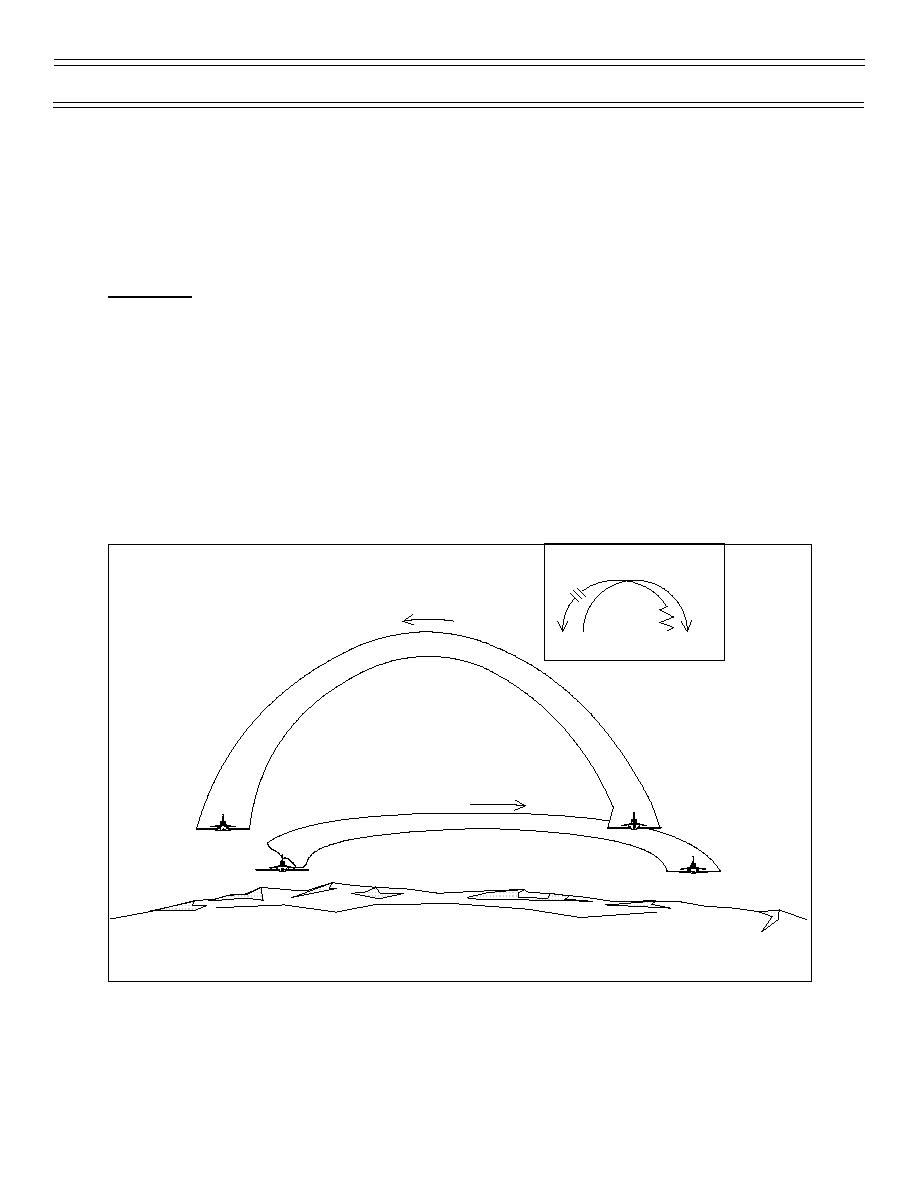
Tactical Formation
Flight Procedures
The wingman loses sight of the lead aircraft, but continues the turn by maintaining airspeed and
AOA. After 90 degrees, the lead will check the wingman’s six and call, “Six clear.” Upon regaining
sight of the lead, the wingman checks his six and calls, “Visual, six clear.” The wingman then
continues to maneuver to combat spread, maintaining 300 KIAS. Make corrections after reacquiring
the lead at approximately 135 degrees of turn. Failure to correct causes you to end up out of
position. The wingman should constantly use an inside/outside scan in order to maintain position.
Cross Turn
The lead initiates the turn by calling, “[Flight’s call sign], cross turn; [lead’s call sign] high/low.” (In
the CNATRA scenario, the lead usually goes low.) The wingman acknowledges, “[Call sign, high/
low].” The high man immediately goes to MRT and turns in the low man’s direction at 17 units
(Figure 12). The pilot going low goes to MRT and executes a 17-unit AOA, at 300 KIAS, and a 70-
degree AOB turn in the high man’s direction with the nose tracking on or slightly below the horizon.
After 90 degrees of turn, he checks the high man’s six and calls, “Six clear.” As the high man
approaches 90 degrees of turn with approximately 1,000 ft of vertical separation, he checks the low
man’s six and calls, “Six clear.” After the cross, the wingman pulls beyond the new reciprocal
heading, taking a 10-30 degree cut into the lead to arrive back in combat spread at 300 KIAS.
Aircraft separation is achieved by the 1,000 ft of stepup maintained by the wingman.
Wingman
Lead
Figure 12: CROSS TURN
(11-98) Original
Page 18


 Previous Page
Previous Page
